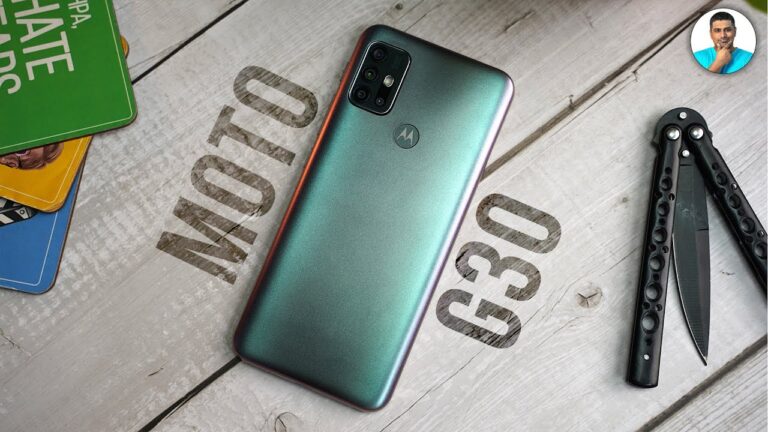Reviewing the Moto G30 feels like reliving Groundhog Day. However, please stay for my endearing nature. The G30 was released with the Moto G10, signaling a change in Motorola’s naming strategy in which higher numerals represent more capacity. The low-cost Moto G10 failed to impress, but will the higher-specced G30 fare better? Let us investigate.
What will you see here?
Design:
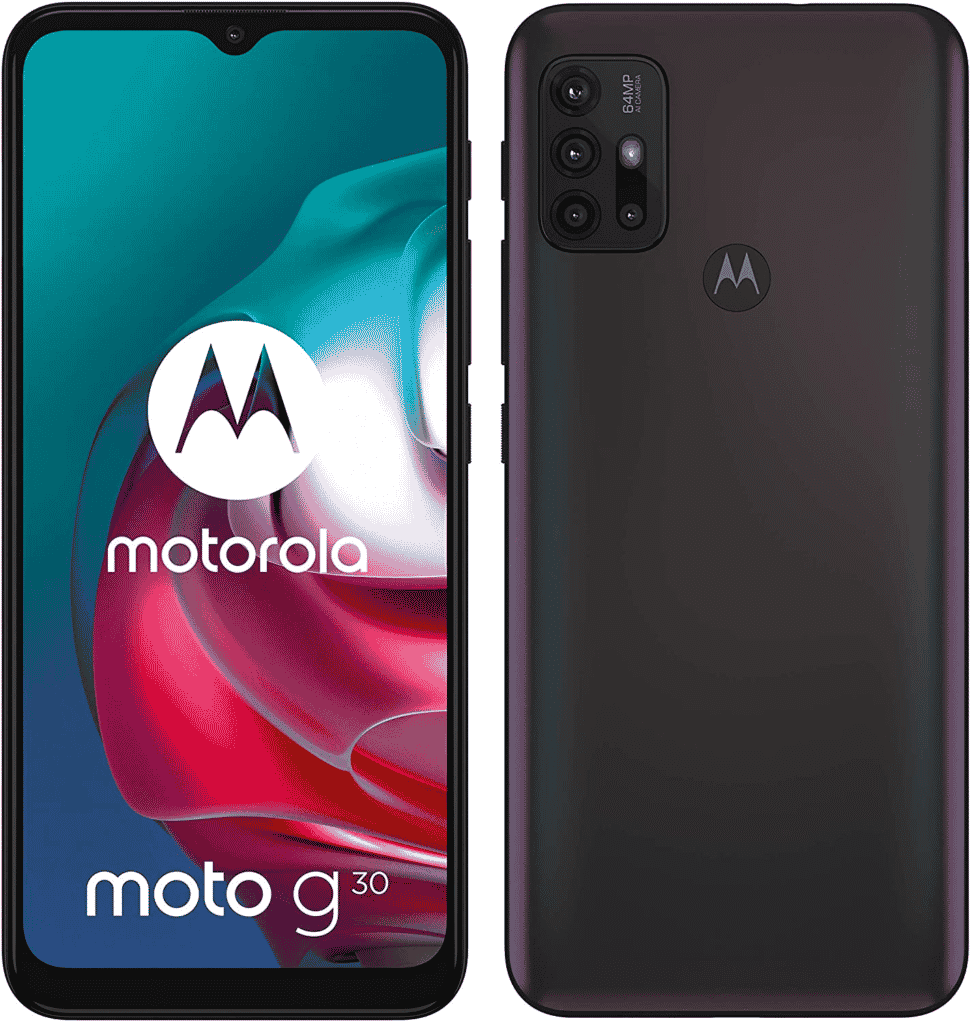
Motorola sticks to its guns when it comes to the idea of the G30. The teardrop camera, circular fingerprint reader on the rear, Google Assistant icon above the volume rocker, and 3.5mm audio connector are all carried over from previous G-series phones. The G30 is, in many aspects, a reskinned Moto G9 Play running Android 11.
The G30’s primary distinguishing features are the lovely iridescent shine on the rear and IP52 dust and water resistance. Otherwise, the phone resembles its predecessors.
The G30 weighs 197g, which is just 3g less than the G10 and the Moto G9 Play from last year. It is, however, substantially smaller than the 221g G9 Power.
If dimensions are important to you, the G30 measures 165.22 x 75.73 x 9.19mm, whereas the G9 Play is 165.22 x 75.73 x 9.14mm – so the G30 is a quarter of a millimeter thicker, but not by much.
Overall, the design has stood the test of time. Motorola clearly sees no benefit in deviating from a proven format. Playing it safe is a dangerous business, especially when firms like Xiaomi and OnePlus develop aggressively in the cheap sector, packing in even more features for less. However, the G30, like previous G Series phones, is a solid 4G smartphone with Bluetooth 5.0, NFC compatibility, and Wi-Fi 802.11 a/b/g/n/ac connection. The phone may be charged over USB-C as well.
Cameras:
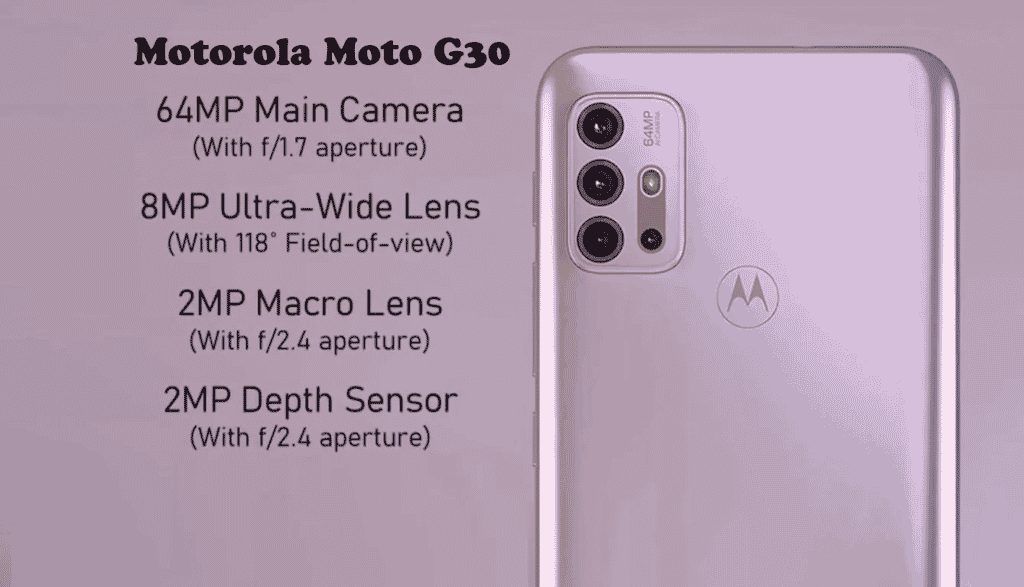
When it comes to cameras, there isn’t much of an update. The G30, like the G9 Power, has a 64Mp primary sensor that outputs to a 16Mp final resolution through pixel binning. Shooting at the sensor’s original resolution is enabled only by going into the camera settings and selecting the ‘Hi-Res’ option. You will also need to wait a few seconds for the picture to load.
On the back, the G30 sports the same 8Mp ultra-wide lens, 2Mp macro, and 2Mp depth sensor as the G10. The phone can take video at up to 60 frames per second, however ultrawide and macro video recording is limited to 30 frames per second.
In terms of image quality, photographs on the G30 perform better in strong light. Colors are balanced and there is a good degree of detail in such conditions.
However, the G30 suffers in low light. Images seem drab and lackluster, and blurriness is a concern. All of the Motorola G phones I’ve evaluated have had issues with their cameras. At this moment, it appears that the camera isn’t a top priority for the company.
However, to be fair, macro images on the G30 have improved. It was also much easy to focus the camera on the topic. While there is some detail loss and they aren’t the most vibrant, I was satisfied with the final photos.
The selfie camera has a 13Mp sensor, which is better than the G10’s 8Mp, but you’ll need to be in a well-lit environment to get the most of it. Images suffer from grain, dullness, and overall blurriness in low light. If you’re looking for the perfect Instagram photo, you definitely don’t want the G30.
Display:
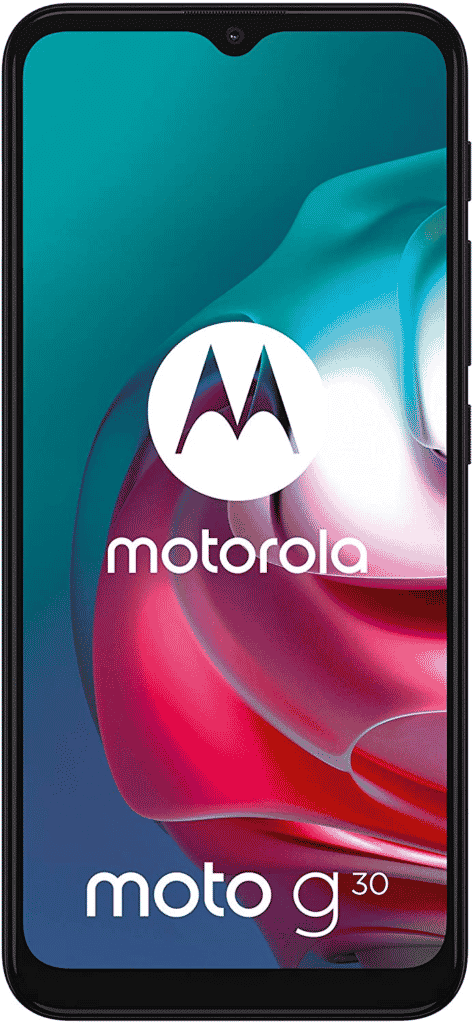
The G30, like the Moto G10, has a 6.5in ‘Max Vision display with HD+ quality (1600×720). Except for the G30’s 90Hz refresh rate, not much has changed here in comparison to earlier G series devices.
This was remarkable a year or two earlier, but with the inexpensive Xiaomi Poco X3 NFC – presently the king of budget phones – sporting a 120Hz display for only £40 extra, it begs the question of whether Motorola is actually striving to compete.
The screen attained a maximum brightness of 366nits. The colors are likewise vivid, making the phone appropriate for social media surfing and casual gaming.
While HD movies and films lack the depth of detail that you’d expect from higher resolution screens, the watching experience isn’t horrible. If you want to perform normal surfing and viewing on your phone, the G30 will suffice.
Battery life:

The battery, like other G Series phones, is the G30’s unquestionable strength. The G30 performed admirably in the PC Mark for Android battery testing, clocking in at around 11 hours and 40 minutes.
In the actual world, you may expect comparable results. I managed to go two days without charging. The G30 comes with a 20W charger, yet the phone charges at 15W. This isn’t as quick as other low-cost phones on the market, such as the £279 Realme 8 Pro, which supports 50W fast charging, but charging the G30 in spurts throughout the day provided it the push it needed to keep me running for hours.
The G30 recovered up to 32% after half an hour, but even a 5-10% increase is significant. In battery-saving mode, I could get up to seven hours with 13 percent remaining, which was a great feature.
Unlike other phones, which limit function to calls and texts, the G30’s battery-saving mode offered access to the camera, applications, and social networking while conserving power in the back.
Performance:

The G30 is powered by a Snapdragon 662, making it speedier than the Moto G10, which is powered by a Snapdragon 460. Because the Snapdragon 662 is the same processor as the G9 Play and G9 Power from last year, the overall benchmark scores are comparable.
Our benchmarks show that the G30 performs similarly to the G9 Play and that the G9 Power actually outperforms the G30 in the multi-core performance score.
While the G30’s overall performance is mainly smooth, our results showed it to be on the slower side when compared to other cheap devices that are just significantly more costly, like the aforementioned Poco X3 NFC and Realme phones, all of which scored in excess of 1700. There were times.
The G30 performed better in gaming tests than its G9 brothers. Its ratings were not far behind those of the Poco X3 or Realme phones, so my suggestion remains the very same: while the G30 is not a gaming phone, it will suffice for casual gaming and social media surfing, thanks to its enormous battery.
Software and features

The G30 runs Android 11, and the experience, like that of earlier G series phones, is clean and as near to pure Google as you can get without purchasing a Pixel phone. Gestural navigation makes it easier to use the phone with one hand. Motorola also retains the features I’ve grown to like on the G series phones, such as the 3 screenshot and karate-chop gesture to activate the flashlight.
Price and availability
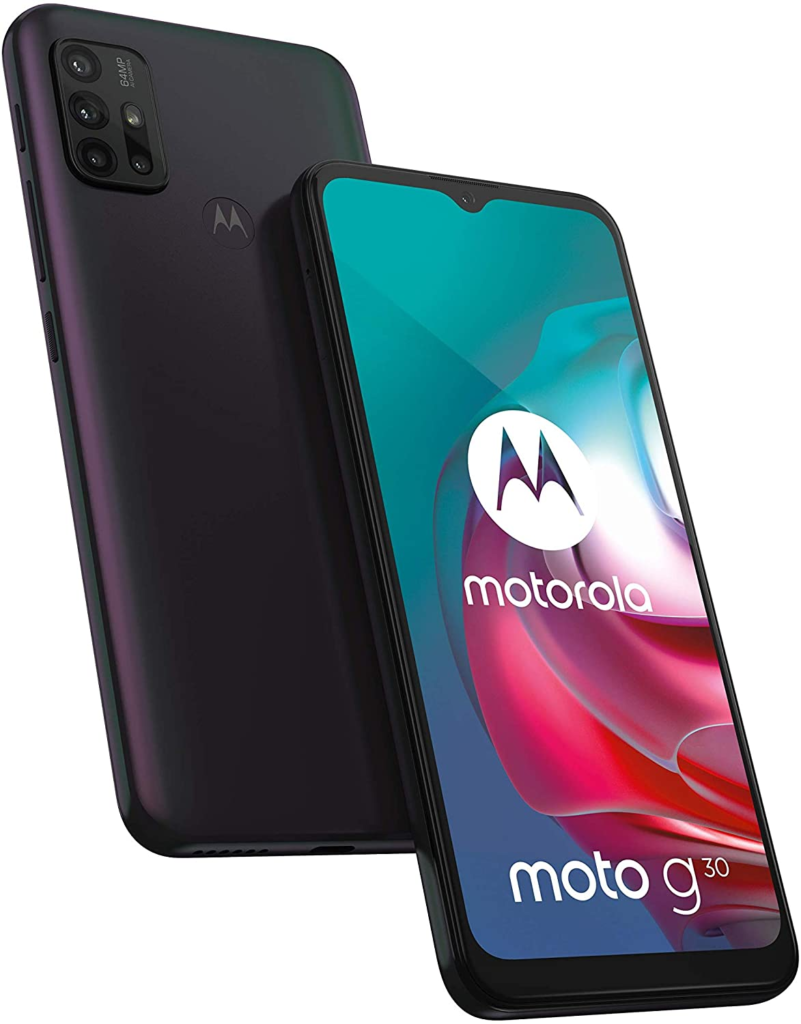
The Moto G30 is available for purchase in the United Kingdom, the United States, and Europe for £159.99/US$239.99/179 €. It is available via Motorola, Lenovo, or
While the device is reasonably priced, you may get a better deal elsewhere. You may have to pay a little extra, but that original cost will go a ways away if you don’t want to update regularly.
Conclusion
The Moto G30 is another run-of-the-mill cheap G-series phone from Motorola. While it is inexpensive, it does not meet the criteria for value. If you don’t mind spending a few pence more, to begin with, fierce competition in the affordable category from manufacturers like Oppo, Xiaomi, and OnePlus means you may get a lot better bang for your buck.
Read more
- Best budget-friendly and premium moto phones !
- Best Motorola phones: Budget phones you can buy in 2025!
- Samsung Odyssey G9 Review-Curved and ultrawide Gaming monitor!


